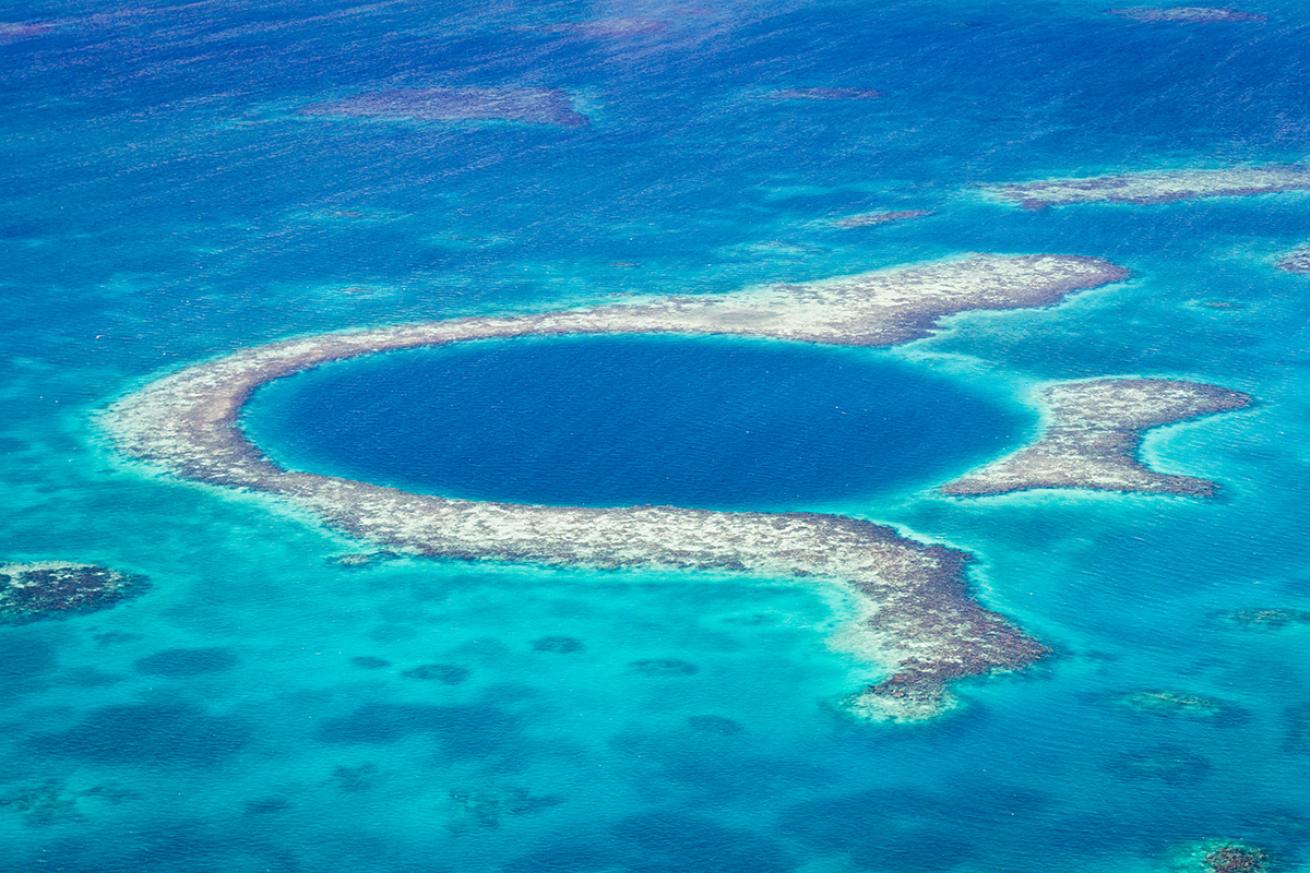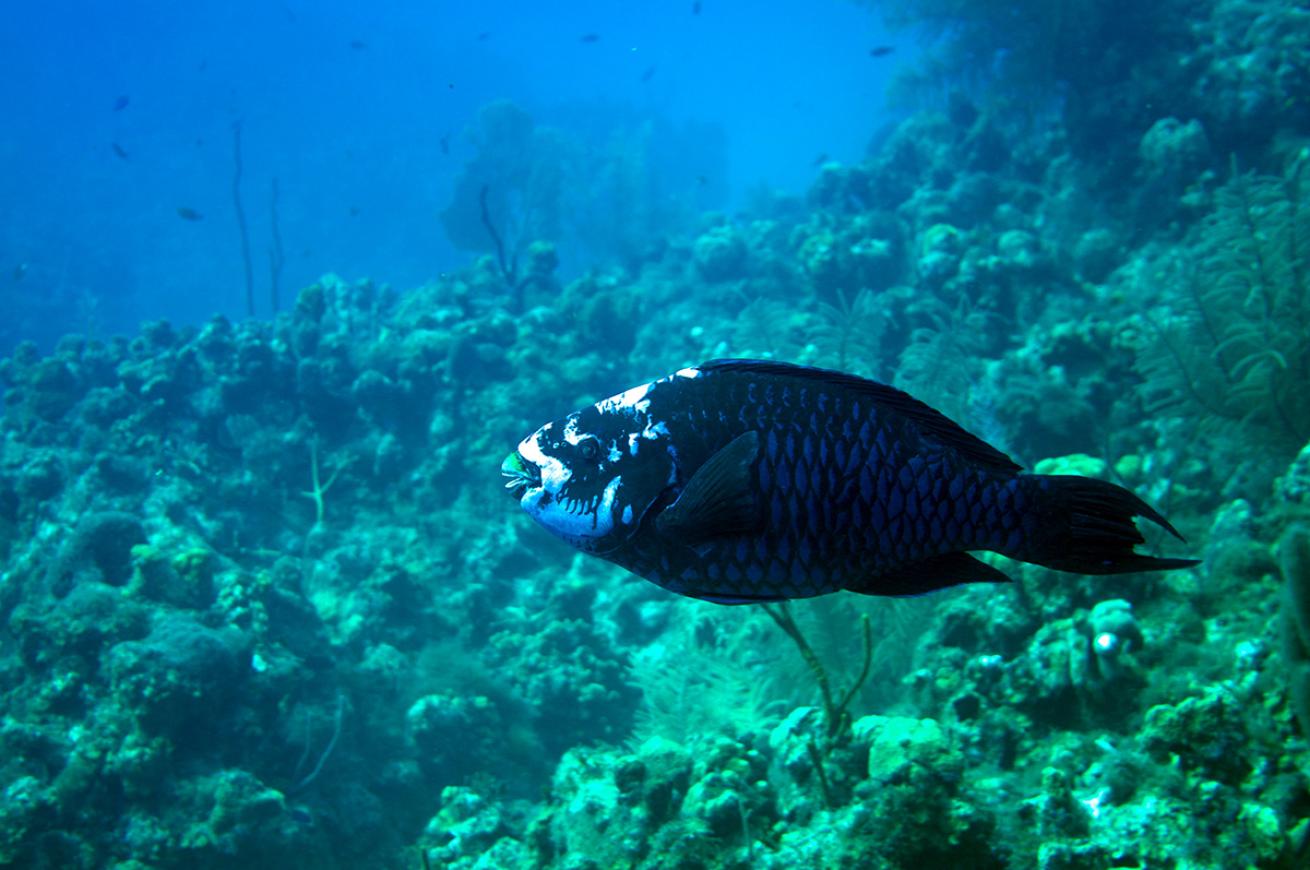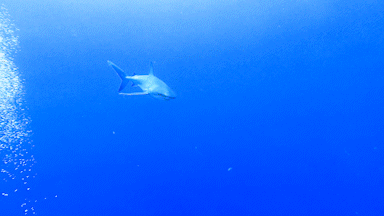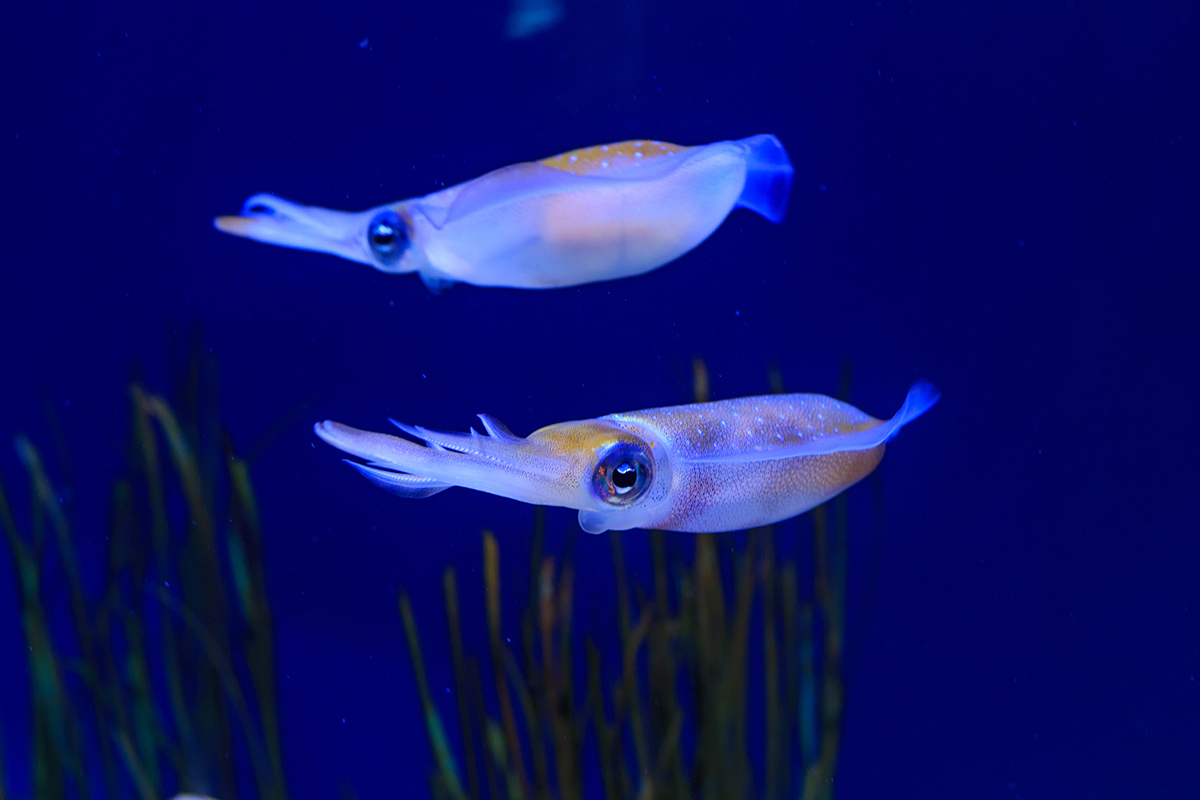Forget 130 Feet—I Loved Diving the Rim of Belize’s Great Blue Hole Even More

Shutterstock.com/WollertzThe shallow reef around the rim of the Great Blue Hole teems with life.
I wasn’t surprised to see the Blue Hole on our Belize liveaboard itinerary. After all, it’s a long-time favorite of scuba divers. Even though it had been 14 years, I clearly remembered this dive: the cold inky water, a solitary reef shark swimming beside us, my dive computer beeping unhappily at our final depth of 130 feet.
As I considered a return to the Blue Hole, I wondered if it was possible to experience a different aspect of the site. What about diving the rim instead? My dive buddy husband agreed to accompany me if we were able to stay at the edge.
A few days before the Blue Hole dive, the captain held a pre-dive briefing. I asked if the two of us could dive the shallows while the rest of the group were on the deep dive. At this point our trip to the Blue Hole had been delayed for two days because of high winds, so the captain said we could discuss further once we had a better read on the weather. After learning that the conditions were acceptable for diving the Blue Hole, we got permission to dive the rim. To my surprise, four other divers expressed interest in bypassing the depths to join us.
By necessity, a deep dive is a well-coordinated exercise in efficiency The Blue Hole is no exception. Time is of the essence and the entire group needs to get in the water promptly, descend to see the formations, and ascend with enough air to go through multiple safety stops. It is also important that the group not get too scattered; the weather conditions can change abruptly, or a medical emergency could occur. For these reasons, the captain had several reasonable requests. The shallow group would enter the water first, facilitating the deep group entry. We were asked to head along the rim for 15 minutes then come back the same way toward the mooring. We also agreed to return immediately if we heard the emergency recall noise of a tank weight clanging on the ladder.
Our group entered the water and headed to the rim immediately to clear out ahead of the deep group. The cold water hit me as I got closer to the hole, as black as I remembered it. Turning to peek over the edge of the wall, I was rewarded with a brief glimpse of a large midnight parrot fish. Startled, it disappeared further down into the dark.

Shutterstock.com/paul01904A midnight parrotfish.
I stopped for a moment to take in the scene. The verticality of the sandy bottom near the rim struck me: It was a bit like hovering over a giant underwater funnel, walls of sand sloping down to a chute. I could easily imagine the earth collapsing under its own weight to form this giant sinkhole.
We took our time exploring the edge of the wall at approximately 30 to 40 feet, accompanied by a pair of large French angel fish the entire way. A 3-foot grouper meandered back and forth while a juvenile hogfish happily rooted in the sand with its pointy snout, taking no notice of us. I admired the spiky dorsal fin and how well its white and pale pink coloring matched the environment.
Midway through our dive, movement in my peripheral vision caused me to turn toward the hole. A glittery curtain was coming up from the depths, thousands of bubbles, all shapes and sizes. Our deep-diving friends were catching up with us.
Turning back at the 15-minute mark, we explored the coral outcroppings that are interspersed along the rim. At the bottom of these structures, cold water sometimes emerged from crevices, upwelling from below. The narrow tunnels that went straight through made excellent hiding places. A lobster’s dream, many had taken up residence in these nooks and crannies.
Approaching the mooring site, the sand flattened out around ranging from 10 to 15 feet. Sunshine dappled the seagrass-filled bottom, with a rainbow of tiny fish zigzagging through the greenery—the photographers were thrilled. Here we reunited with the deep divers finishing up their final safety stop. Their arrival sent a manta ray our way, and I glued myself to him for the rest of the dive.
Diving the shallows at the Blue Hole gave me a better understanding of the area. In contrast to the brief, regimented, in-and-out nature of a deep descent, this dive was much more leisurely. We appreciated this relaxing spell after several days of high winds, currents, and somewhat limited visibility. If the weather cooperates and your boat captain agrees, exploring the shallows of the Blue Hole provides a new perspective of this renowned dive site.












